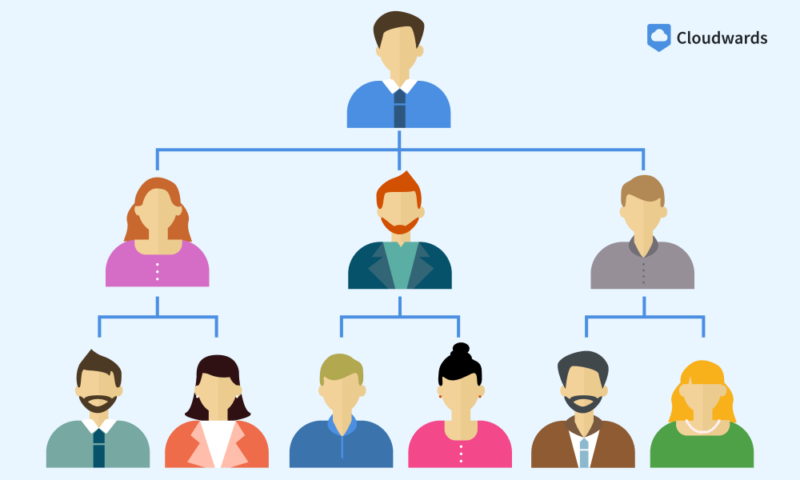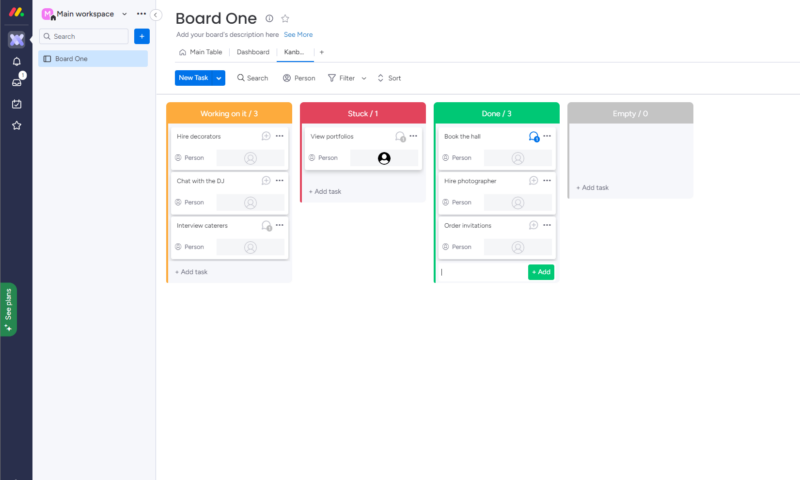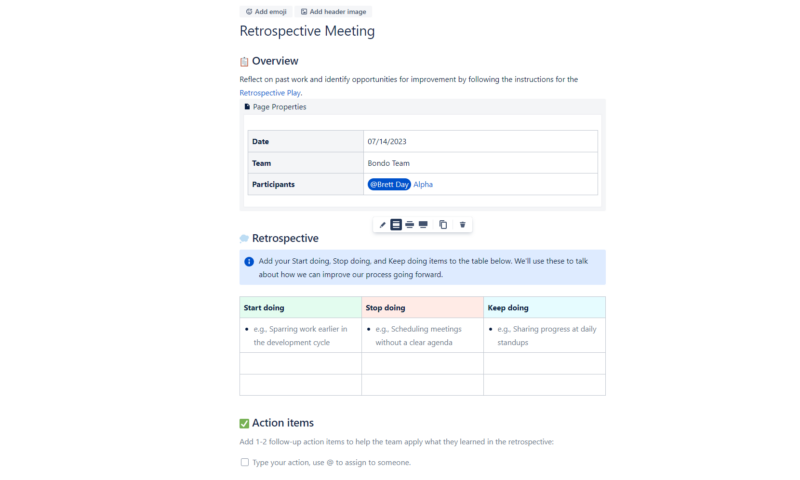What Are Scrum and Agile Feature Teams? Comparisons, Pros & Cons in 2025
If you’re new to agile frameworks and methods, and aren’t sure what feature teams are or how they can improve many aspects of agile development, you’re in the right place. Our feature teams guide will cover all of this and more.
As agile frameworks become more widespread across various industries, the use of feature teams to quickly and efficiently create end-to-end product features has soared. However, just because many organizational structures include feature teams doesn’t necessarily mean they’re right for you.
In this guide, we’ll cover the pros and cons of feature teams; their characteristics; how they stack up against component, product and delivery teams; and what a typical workflow for a feature team looks like, which you can track with some of the best project management software. Let’s get started.
-
05/29/2024
Updated the article to add custom graphics.
What Is a Feature Team? Scrum and Agile Team Structures Explained
A feature team, a critical part of the scrum team structure, is a cross-functional team composed of software developers whose primary function is to develop end-to-end customer-centric features that will be included in software produced for clients or stakeholders. You may also hear about “development teams” within scrum, which is another term for feature teams.

It’s worth noting that, while feature teams are a critical component in the scrum framework, many other agile frameworks are also utilizing feature teams as agile methods creep into industries outside of software development. Agile feature teams report to a project manager, are adaptable and cross-functional, and produce and test products.
Avoid Costly Project Management Mistakes – Get Free Tips Today!

- Discover 10 fundamentals of project management
- Understand step-by-step plans for PM execution
- Learn tips to avoid 5 common mistakes by beginners
Characteristics of Feature Teams
Now that you know what feature teams are and what they do, you might be wondering what some of the key characteristics of these teams are. After all, it’s hard to hit the ground running and perform at peak levels with teams that do not meet key criteria. When organizing teams for projects, make sure they are:
- Tenured: The best team to work on a project, especially a complex one, will be tenured, meaning the people on the team have been working together for a long time. A tenured team will be more productive, as the team members know what the others are thinking and interact with each other fluently.
- Cross-functional: You must ensure that the team you assemble for agile development offers a variety of expertise. The team must consist of individuals who can collaborate and share their specialized knowledge with each other so they can reach a common goal.
- The appropriate size: Generally, a feature team includes eight scrum team members, as well as a scrum master and a product owner. However, some feature teams can have as many as nine scrum team members. In scaled agile frameworks such as SAFe and the scrum of scrums, which have multiple teams, this number will be higher.
- Co-located: Ideally, the team you assemble will be co-located, meaning they all live and work locally. This will lead to better collaboration and increased response times for those who need help. However, thanks to many of the best project management software platforms, distributed teams can also be productive.
- Comfortable communicating: Communication is at the forefront of every successful agile team. Make sure that every team member is comfortable speaking openly and honestly. Honest communication will ultimately lead to projects meeting end-user requirements and result in a better final product overall.

piece of software for scrum and agile teams.
Feature Team Example
Now, we’ll take a look at what feature teams do. We know they create customer-facing features, provide value to end-users and strive to continuously integrate feature requests from clients and stakeholders, but what does that process look like? We’ll break it down below.
1. Sprint Planning
A feature team and the product owner discuss user stories (product features) that must be added to the product backlog (to-do list). The feature team helps write user stories, defines the definition of ready and the definition of done, and assigns task difficulty ratings using agile estimation techniques. Once finished, user stories are selected for an upcoming sprint.
2. Time-Boxed Events
A feature team organization completes its work during a sprint or time-boxed event, which lasts one to four weeks. Each developer is assigned tasks to complete, but because teams are cross-functional, they help others as needed. If you’re part of a scaled agile team like SAFe, practicing shared-code ownership between teams will help you complete tasks efficiently.
3. Sprint Reviews
At the end of each sprint, the feature team, along with the product owner, meets with clients and stakeholders to demo the latest iteration of the product. The team receives feedback and then conducts backlog refinement to prioritize tasks for the next iterative development period. The team also writes user stories for any additional features that have been requested.

4. Product Delivery
Once the software or product being developed has met all end-user requirements and all tasks have been completed, the feature team gives a final demo of the software to clients and stakeholders before delivering the final product.
5. Retrospective Meetings
Once a project is over, the feature team, product owner and scrum master hold a retrospective meeting to discuss it. Items discussed include what went well, what didn’t and what can be improved. The cycle then starts over with a new project. Project managers can use some of the best agile tools to help plan these meetings.
Benefits of Feature Teams
As you can imagine, a feature team organization can take advantage of many of the benefits of agile. If you’re still on the fence about switching from waterfall development, perhaps the benefits below will help you change your mind.
Frequent Delivery of Working Features
Having teams that are focused on user stories and frequent delivery leads to many benefits. Clients and stakeholders can more easily get involved with the development process, bugs and issues can be identified quickly, and change requests can be implemented early in the process. Ultimately, this leads to increased product quality and value.
Cross-Functionality
Due to their knowledge and skills in multiple areas, cross-functional feature teams can create end-to-end user features without needing outside help. Whether code needs analyzing, software needs testing or user interfaces need designing, a feature team can handle it all quickly and efficiently.
Greater Efficiency
The guidelines of the agile manifesto are clear and state that individuals and interactions take precedence over processes and tools. Feature teams are excellent collaborators, which helps them discuss projects, features, issues and more with minimal fuss. A team that can work together seamlessly can be self-organizing and highly efficient.
Disadvantages of Feature Teams
With advantages come disadvantages, and feature teams are no exception. Take a look at the common disadvantages of using this approach below to decide whether any are deal breakers.
Technical Debt
Feature teams can be so focused on churning out features and frequent iterations that they neglect bugs and issues in the software. Ideally, feature teams should set aside roughly 20% of their time to correct issues, but this doesn’t always happen. This can lead to buggy software, which is not what you want to show clients. Technical debt is a classic feature team anti-pattern.
Difficult to Implement
Unfortunately, feature teams can be more challenging to implement than component teams (which we’ll cover later) because they only work well if the team is tenured and has the right mix of skills and specialty knowledge.
Change Management
As you can imagine, having one team with individuals who have worked together for a long time can raise its own problems, namely, resistance to change. Change can come in the form of different work processes and new team members, among others. The resistance to change could become so bad that you need to bring in a change manager.
Feature Teams vs Component Teams
If you plan to switch to an agile framework and research feature teams, you’ll also encounter the term “component teams.” As you’ll see below, the two teams are quite different in what they do and how they function.
In a nutshell, feature teams are self-organizing, collaborative and guided by agile principles. This allows them to be highly adaptable, self-starting and cross-functional, meaning they share team responsibilities. A component team organization uses traditional project management methods, is not cross-functional and relies on other teams to complete its work.
The biggest difference is in what the two teams do. Feature teams create end-to-end features that come from a product backlog. Component teams work on individual components of those features, which other teams working on the project can use. The table below shows the biggest differences between the two types of teams.
| Feature Teams | Component Teams |
|---|---|
| Work is measured by the amount of customer value created via full features. | Work is measured by how many lines of code are produced for single components. |
| They are cross-functional and cross-component, meaning they’re skilled in many areas. | The focus is always on one specialized area. |
| Feature teams are agile and can easily course-correct. | Component teams use waterfall development methods and follow strict plans and paths. |
| Collaboration is a key part of feature teams, and tasks are often shared. | Each team member has individual tasks and responsibilities. |
| They champion continuous learning to help the team grow. | The focus is on current skill sets and not on growth. |
Which Is Best: Feature Teams or Component Teams?
There is no one-size-fits-all organizational structure. It’s hard to say whether component teams or feature teams are better, as they’re both suited to different work. If you need a flexible team that can pivot and react quickly to market changes, go with a feature team structure. Use component teams if you want stability and prefer using structured, traditional methods.
Feature Teams vs Other Team Types: Comparisons
Feature teams and component teams are the two most popular types of teams in project team structures; however, there are a couple more team types and team names to consider. Below, we’ll take a quick look at product teams and delivery teams.
Feature Teams vs Product Teams
Both teams are cross-functional and use agile methods. The biggest difference is that product teams measure outcomes, not output, and have the ability to independently solve problems in a way that’s best for the customer. Feature teams measure production and not always outcomes, and they solve problems in a way that serves the business first and the customer second.
Feature Teams vs Delivery Teams
There’s very little difference between a feature team and a delivery team. The major difference is that delivery teams are focused on output and are not cross-functional, whereas feature teams are cross-functional and have team members skilled in multiple areas.
Final Thoughts
As you can see, implementing feature teams into your agile workflow can be incredibly beneficial. Feature teams are highly flexible, collaborative and cross-functional. They can produce end-to-end features for software and products more efficiently than teams that use more traditional project management structures.
We hope our guide to feature teams has helped you better understand their role on scrum and agile teams. Are you going to implement feature teams into your team structure? Which agile framework is your favorite? Let us know in the comments and, as always, thanks for reading.
FAQ: Feature Teams
The difference between component and feature teams is that feature teams are agile, cross-functional and collaborative, and they build end-to-end features. Component teams use traditional, non-agile methods and create specific feature components rather than full features.
Feature teams can increase product output and quality, improve efficiency and ultimately deliver more value to stakeholders and clients.
Product teams measure outcomes and are empowered to solve problems independently to create the best possible outcome for the customer. Feature teams focus more on output and might prioritize the business over the customer.
Sources:


